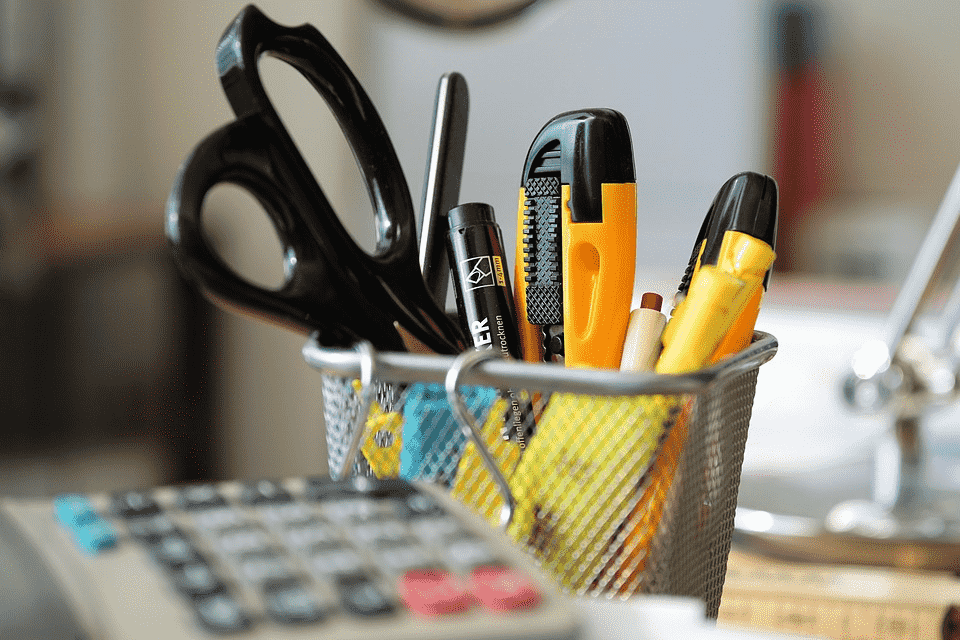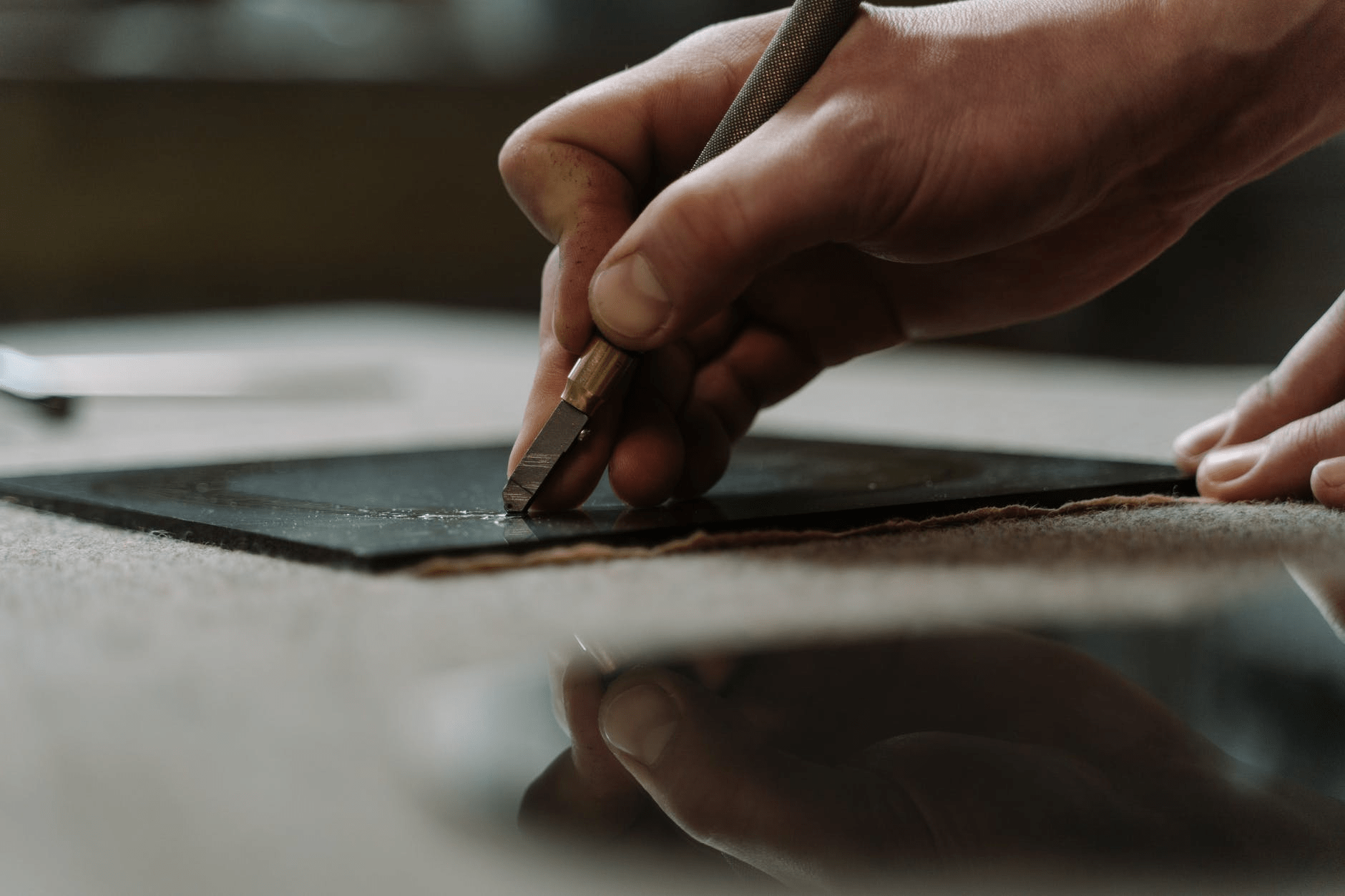Stained glass art can be an intimidating task but with a little practice and the right stained glass tools & supplies, you can learn to create stunning prices of stained glass. However, with so many tools and other consumable supplies, it can be quite confusing what to choose.
If you are a beginner at stained glass art and interested in learning it to get command over it, this guide is for you. In this comprehensive guide, we’ll help you pick and choose the basic and essential tools you’ll need to get started with stained glass art.
Beginners can start stained glass art with low initial investment—by making less complex, smaller pieces that only require a few of the tools. You also have a choice to buy a stained glass starters kit or to handpick the required tools instead.
Basic Stained Glass Tools
The following are the most basic stained glass tools to create stained glass art. Some of these you may already own or can be easily improvised with the help of other tools.

- Pencil: It is the most basic tool required to draw your own patterns.
- Permanent Marker: It helps you trace the outline of the pattern of the surface which was earlier designed by pencils.
- Masking Tape: It is a type of pressure-sensitive tape that helps you mask off areas that should not be ground.
- Scissors: These are really helpful for cutting out stained glass projects. Having double-bladed scissors can help take off excess paper and will save your grinding time.
- Tracing Paper: It is used to transfer your cut patterns to the glass.
Safety Equipment
Safety equipment is a must while working with glass projects. Even a tiny shard of glass can be a major hazard to your health. These safety wearables help you protect yourself from monetary/physical injuries.

Eyewear
Always use high-quality safety goggles as they are not only comfortable but also offer good protection when dealing with small shards of glass.
Rubber Finger Protectors
These are a little lifesaver to have if you don’t want your nails to get ground off during the grinding process.
Gloves
A sturdy pair of cut-resistant gloves help you protect from sharp glass edges which can cut extremely easily. These reduce the chances of hurting yourself while working with the acidic flux.
Dust Mask
Dust mask protects you from toxic fumes—of the soldering iron—and glass dust—caused during the cutting and grinding of the glass.
Must-Have Stained Glass Tools
If you’re looking for a minimal startup set to begin your stained glass art, here are the must-have tools you need:
Glass Cutter
A glass cutter is one of the most important tools for stained glass art to cut pieces out of your glass. It helps you make extremely precise scoring—whether freehand or guided by your traced template—of your glass pieces.

There are many different kinds of glass cutters available in the market. It is up to you to try and test some of them out. The two most common cutters are:
- Comfort Grip Supercutter which you can hold like a pen/pencil
- Pistol Grip Tap Wheel Supercutter that you can hold in your fist by placing it between your thumb and finger.
Copper Foil
Copper foil is usually a tape—copper-faced on the one side and sticky on the other—that is applied to wrap the edge of the glass pieces. It is an easy and quick way to start creating stunning stained glass for beginners. It allows you to solder two or more glass pieces together.
It comes in multiple shapes, sizes, styles, and patterns. You can also choose the color of the sticky side of your copper tape—copper, silver, and black. If you have no idea which one to choose, as a beginner, you should start with standard 1/4″ copper foil.
Patina
Patina is a metallic fusing glass paint that you apply on the solder joints for an even and consistent finish. It helps you change the color of solder with a finished look in either a silver, black, brass, or copper look—depending on which color of patina you choose.
Important Tip: Make sure you thoroughly clean your copper foil panel before applying it.
Glass Cutting System
An adjustable glass cutting system helps you cut the glass into desirable shapes—squares, rectangles, triangles, rhomboids, diamonds, hexagons, and more.
With innovative attachments—curves, circles, so on,—you can add or remove straight edges as required. Also, you can achieve any angle with multiple curved or straight edges at once.
Glass Cutting Oil
Glass cutting oil helps lubricate your glass piece during the cutting process. It is essential to correctly break your glass along with the scores you create. In order to use it:
- Put it in a small container
- Put a cotton ball in the solution
- Dip your glass cutter after every cut
Nowadays a majority of glass cutters have built-in internal reservoirs that hold the oil during the process.
Solder
Stained glass solder helps you melt down the solder wire along your applied copper tape lines. It helps you join all the glass pieces together. Although, there isn’t much to solder yet it is better to use a good quality solder wire.
60/40 solder wire is the best choice for soldering. It means 60% tin & 40% lead which offer a strong bond between the two metal pieces.
Running Pliers
Running pliers are one of the most valuable tools for glass cutting. These help you break the glass after scoring lines with the help of a glass cutter. All you need to do is to hold the glass with these pliers and apply little pressure on both sides of the scoreline.

Usually equipped with a rubber tip to protect the glass, these generally have adjustable screws to accommodate glass of different thicknesses. These are ideal for both straight and curved cuts.
Grozing Pliers
Grozing pliers, also known as breaking pliers, are used to cut the glass. Looking similar to running pliers, these work in a different way. Their serrated jaws help you graze the nubs off curved & straight cuts in case of an unclean cut.
Important Tip: Use a grinder after grozing to get the smooth and safe edges.
Glass Grinder
A stained glass grinder tool is another useful tool to cut down on waste & achieve precision fits. It is a great way to get that perfect shape with minimal physical effort.
It is very useful for professional artists accomplishing considerable workload as it smooths out the rough glass edges in a jiffy. A glass grinder is also great at grinding excess glass material that you are not able to clear with your normal cutter or pliers.
Optional Stained Glass Tools
Some stained glass tools are great for saving you time and effort but are not mandatory for a beginner stained glass artist. After you have completed your beginner’s phase, and wish to take your stained glass art to the next level, these tools will definitely help you.
Copper Foiling Machine
It is certainly not a necessary stained glass tool but it makes things easier. It is a copper foil dispenser device that you load your foil rolls onto. It is a great time-saving tool for sure. All you need to do is simply slide the glass edges on the roller that has the copper foil.
Flux
Flux is another important consumable—available in both gel and liquid base—that helps the solder stick to the glass pieces and creates a stronger final product. It acts as a cleaning agent that helps remove any oxidation on the solder to provide a better point of contact.
It helps the solder flow better, and eventually, it seals the solder from the air, thus preventing further oxidation.
Conclusion
Stained glass art is an expensive hobby that requires accurate stained glass tools and supplies. A majority of these above-mentioned beginners’ tools can be easily available online.
Here we have explained the best of the basic, safety, must-have, and optional tools that’ll help you start stained glass art. Some of these tools are expensive but if you wish to pursue this professionally, think of your purchases as investments.
Moreover, buying premium-quality tools will ensure they outlast the alternative cheaper ones and also perform better as well.

